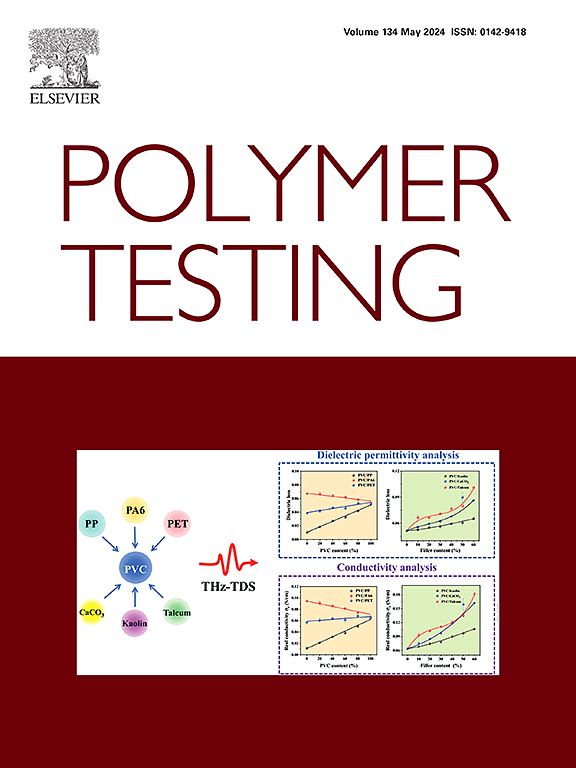Preparation and performance evaluation of Zn-N-TiO2 nanoparticles-containing dental adhesive
IF 5
2区 材料科学
Q1 MATERIALS SCIENCE, CHARACTERIZATION & TESTING
引用次数: 0
Abstract
Dentin adhesives (DAs) are essential for securely bonding restorations to tooth structures. Traditional DA formulations exhibit insufficient antibacterial properties, resulting in increased susceptibility to secondary caries at the adhesive interface, ultimately compromising restoration longevity. Thus, to improve the success rate of treatment, developing new antibacterial DAs is crucial. In this study, we synthesized zinc and nitrogen co-doped titanium dioxide (Zn-N-TiO2) with a predominantly anatase-phase structure, which exhibits antibacterial properties through the generation of reactive oxygen species (ROS). We selected nanoparticles with a 3 % doping concentration of Zn and N for their notable antibacterial activity, and then added them into DAs at varying mass ratios. Experimental results demonstrated that the DAs effectively inhibited Streptococcus mutans (S. mutans). With the exception of the 7 wt% group, the cytotoxicity levels in all other groups were 0 or I, indicating high biocompatibility. The tensile bond strength (TBS) ranged from 30.66 ± 3.22 MPa to 32.04 ± 2.24 MPa, which indicates its potential to provide reliable bonding performance in clinical applications. This research offers valuable insights for the development of antibacterial DAs.

含Zn-N-TiO2纳米牙胶粘剂的制备及性能评价
牙本质粘接剂(DAs)是将修复体安全地粘接到牙齿结构上所必需的。传统的DA配方抗菌性能不足,导致粘接界面对继发龋的敏感性增加,最终影响修复寿命。因此,开发新型抗菌DAs是提高治疗成功率的关键。在这项研究中,我们合成了锌和氮共掺杂的二氧化钛(Zn-N-TiO2),其主要是锐钛矿相结构,通过产生活性氧(ROS)来表现出抗菌性能。我们选择了锌和氮掺杂浓度为3%的纳米粒子,因为它们具有显著的抗菌活性,然后将它们以不同的质量比加入到DAs中。实验结果表明,DAs能有效抑制变形链球菌(S. mutans)。除7 wt%组外,其余各组细胞毒性水平均为0或1,表明具有较高的生物相容性。抗拉粘结强度(TBS)范围为30.66±3.22 MPa ~ 32.04±2.24 MPa,具有良好的临床应用前景。本研究为抗菌DAs的开发提供了有价值的见解。
本文章由计算机程序翻译,如有差异,请以英文原文为准。
求助全文
约1分钟内获得全文
求助全文
来源期刊

Polymer Testing
工程技术-材料科学:表征与测试
CiteScore
10.70
自引率
5.90%
发文量
328
审稿时长
44 days
期刊介绍:
Polymer Testing focuses on the testing, analysis and characterization of polymer materials, including both synthetic and natural or biobased polymers. Novel testing methods and the testing of novel polymeric materials in bulk, solution and dispersion is covered. In addition, we welcome the submission of the testing of polymeric materials for a wide range of applications and industrial products as well as nanoscale characterization.
The scope includes but is not limited to the following main topics:
Novel testing methods and Chemical analysis
• mechanical, thermal, electrical, chemical, imaging, spectroscopy, scattering and rheology
Physical properties and behaviour of novel polymer systems
• nanoscale properties, morphology, transport properties
Degradation and recycling of polymeric materials when combined with novel testing or characterization methods
• degradation, biodegradation, ageing and fire retardancy
Modelling and Simulation work will be only considered when it is linked to new or previously published experimental results.
 求助内容:
求助内容: 应助结果提醒方式:
应助结果提醒方式:


